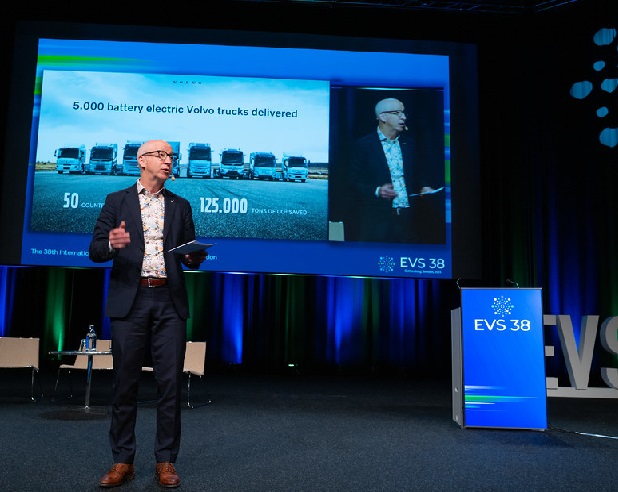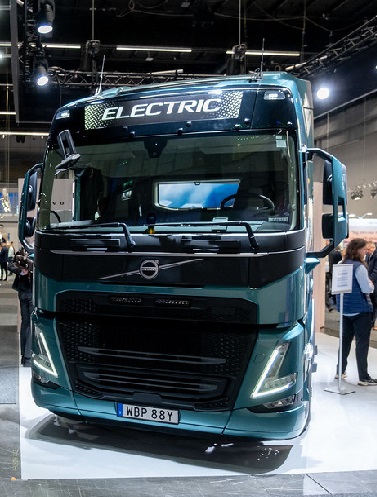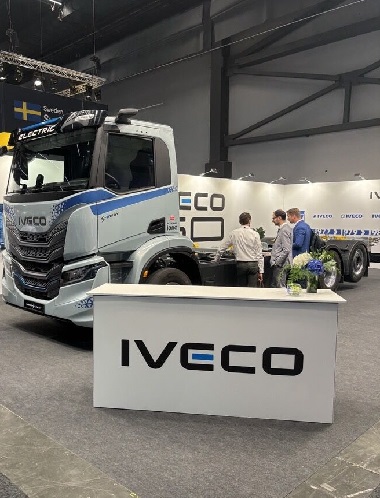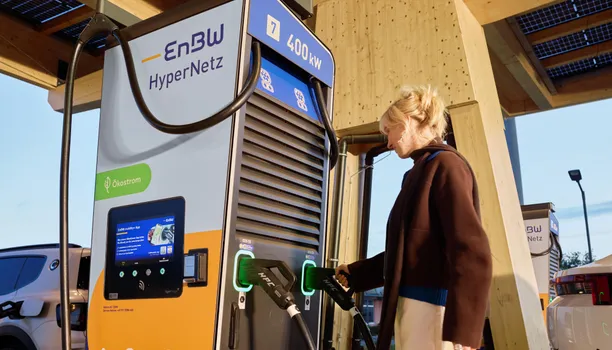From 15 to 18 June, industry leaders, researchers and policymakers gathered in Gothenburg, Sweden, for the 38th International Electric Vehicle Symposium and Exhibition (EVS38).
While various products and innovations were showcased, one standout took centre stage: electric trucks.
This technology not only captured attention on the exhibition floor but also featured prominently in discussions and panels.


“This was the edition of EVS where manufacturers came to show that they already have competitive and exciting electric models on the market,” says Chris Heron, Secretary General of E-Mobility Europe, in an interview with Mobility Portal Europe.
He adds: “Now is the time to push this market forward so it grows as it should.”
During the event, renowned brands such as Volvo Group, Mercedes-Benz, Scania Group, and IVECO presented their latest developments in heavy-duty vehicles.



Another breakthrough that drew considerable attention was the Megawatt Charging System (MCS).
“The industry showcased its large megawatt charging stations, ready to power those trucks,” Heron notes.
Thanks to the work of original equipment manufacturers, electric trucks are now available with ranges of up to 600 kilometres and charging times as low as 40 minutes using MCS technology.
Battery innovations also played a key role, attracting strong interest from experts and attendees alike.
First Public Demonstration of the MCS
As part of EVS38, the first public demonstration of the megawatt charging system took place at the Milence centre in Landvetter, in collaboration with Volvo Trucks.
The power supplied was enough to charge the battery of an FH Aero Electric truck from 20% to 80% in just 40 minutes.
This means more uptime, increased productivity, and a significant step forward for long-distance electrification.
But this is just the beginning.
By 2027, Milence will install at least 284 MCS charging points at 71 locations across ten European Union (EU) member states.
What are the main barriers to the business model for e-Trucks?
During one of the presentations at EVS38, the results of a survey were revealed, focusing on the barriers facing the electric truck business model.
The findings were unsurprising: lack of charging infrastructure was identified as the leading obstacle, cited by 31% of respondents.
With 23%, both high upfront vehicle costs and grid limitations along with energy prices ranked second among the most frequently mentioned challenges.
Additionally, 15% of participants pointed to the absence of supportive policies and robust regulatory frameworks, while 8% cited uncertainty regarding the residual value of electric trucks as a factor hindering long-term investment decisions.
Only 1% identified limited customer demand as a relevant issue, suggesting that market interest is already present.
On the matter, Chris Heron remarks: “Shared responsibility is a key message we’ve conveyed at EVS. We must move forward together to address these challenges—none of us can do it alone.”
The industry is already stepping up.
This year, more affordable electric vehicles are entering the European market. Simultaneously, several companies are ready to invest in battery manufacturing plants, charging infrastructure, and more.
“Now we need governments to take that step as well—both at EU level and nationally—and to support the ambitions we’ve set with a strong, pro-industry policy, which these companies need in order to compete,” the executive emphasised.
E-Mobility Europe urges “no backpedalling” on objectives
E-Mobility Europe connects over 80 stakeholders in the ecosystem to provide a unified vision to policymakers.
“We advocate for Europe to maintain a consistent direction until 2035 for cars and until 2040 for trucks. We cannot backtrack on the current ambitions,” the executive emphasises.
“We will do whatever it takes to stay on that path,” he assures.
In this context, Mobility Portal Europe asks Chris Heron about his vision for the electric mobility ecosystem in Europe by 2030.
Heron expects the sector to have developed into a prosperous electric mobility ecosystem.
“I hope we continue to protect automakers, support their growth, and back all of this with a new value chain for batteries, along with the necessary infrastructure—not just the installation of charging points, but also the technologies and software that will make it possible,” he highlights.
“The future looks promising, but we need to act now to make sure it becomes a reality. On a global scale, it’s a very challenging world and we’re facing very tough competition. We all know how advanced China is in this race,” he adds.
With only five years left until 2030, Heron states that “this year must be a year of decisive action.”

When will the next editions of EVS take place?
The EVS38 was a high-voltage edition: over 10,000 visitors attended during the four days, representing more than 55 countries, with the majority coming from Sweden, Germany, France, The Netherlands, and Norway. Additionally, there were 260 exhibitors.
Next year, EVS39 will take place from 21 to 24 June in Long Beach, California.
“The following year, it will be in Yokohama, Tokyo. And in 2028, it will return to Europe. So we are already thinking about the best location to host it,” reveals Heron.
READ MORE
-
chargecloud Expands Marketplace with AI-Based Support: Cooperation with Lemonflow Technologies
The integration brings 24/7 AI-powered user support, fully embedded into the chargecloud ecosystem, aiming to enhance operational efficiency and service quality for CPOs across Europe.
-
EV transition in Europe slows, but momentum remains after EU climbdown
EU policy flexibility may ease short-term pressure on automakers, yet rising EV sales, infrastructure needs and long-term investment signal that electrification remains the industry’s core trajectory.
-
EnBW and Alpitronic strengthen long-term partnership to scale high-power charging across Germany
The agreement covers fast-charging hardware, joint development of future functionalities and a multi-year maintenance framework to support EnBW’s expanding HPC network.










